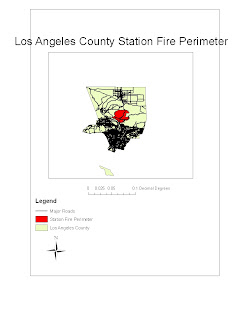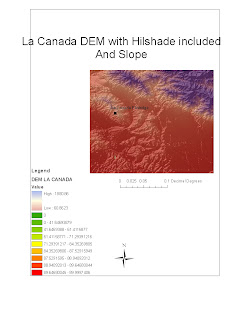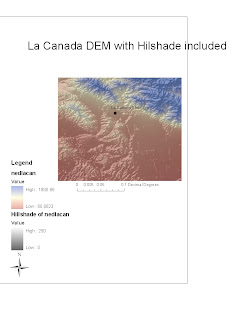 The following map represents the percentage of Black population per county in the 2000 Census for the United States of America. We can clearly see a heavy population occurring in the southeast portions of the United States. Slight larger populations do occur in scattered parts of the country, but the greatest percentage in this South-East corner. Generally, when one considers the Great Southern Tradition of the African American Race, one does not truly grasp the population in that region. The percentages in this region are far different compared to the rest of the country than anyone would expect, and a map allows the audience to truly visualize this difference.
The following map represents the percentage of Black population per county in the 2000 Census for the United States of America. We can clearly see a heavy population occurring in the southeast portions of the United States. Slight larger populations do occur in scattered parts of the country, but the greatest percentage in this South-East corner. Generally, when one considers the Great Southern Tradition of the African American Race, one does not truly grasp the population in that region. The percentages in this region are far different compared to the rest of the country than anyone would expect, and a map allows the audience to truly visualize this difference. The trend seen here in the representation of other Races in the United States is very intriguing. One would initially expect the largest counties to have the greatest diversity, but this map clearly shows a major trend of the Western half of the United States being much more heavily diverse. One logical explanation for this trend could be dated back to the beginnings of this country. The Eastern part of the country was initially the only populated parts of this country. This would lead to different Races moving to the free land Western frontier.
The trend seen here in the representation of other Races in the United States is very intriguing. One would initially expect the largest counties to have the greatest diversity, but this map clearly shows a major trend of the Western half of the United States being much more heavily diverse. One logical explanation for this trend could be dated back to the beginnings of this country. The Eastern part of the country was initially the only populated parts of this country. This would lead to different Races moving to the free land Western frontier. This map demonstrates the distrubution of the Asian population in the United States at the time of the 2000 Census. As is clearly shown, the Asian population in the United States is focused primarily around the Pacific Coast of this country. This trend is most likely caused by the fact that the Asian countries are located on the other side of the Pacific ocean from the Western Coast of the United States. One would expect populations from the Asian continent were much more likely.
This map demonstrates the distrubution of the Asian population in the United States at the time of the 2000 Census. As is clearly shown, the Asian population in the United States is focused primarily around the Pacific Coast of this country. This trend is most likely caused by the fact that the Asian countries are located on the other side of the Pacific ocean from the Western Coast of the United States. One would expect populations from the Asian continent were much more likely.The Census maps allow us to take public data and create an image to represent a certain aspect of that data. This data allows us to differentiate different populations as seen in the maps above. Race is only one of many, many subtopics that can be used to visualize this Country of ours in a completely different way. We are used to seeing this country as a whole represented equally. Maps, such as the ones above, show the non-random trends that are occurring in the United States in terms of populations.
Again, the idea of representing data to best suit what the presenter is trying to inform the audience is a crucial component of ArcGIS. Yes, this program is quite complicated and takes a while to learn how to use it efficiently. However, once one learns how to best incorporate information into the maps in a successful manner, one can use the wonders of ArcGIS to represent unlimited amounts of information. ArcGIS has proven to be a very intriguing program with a vast array of possibilities.




















